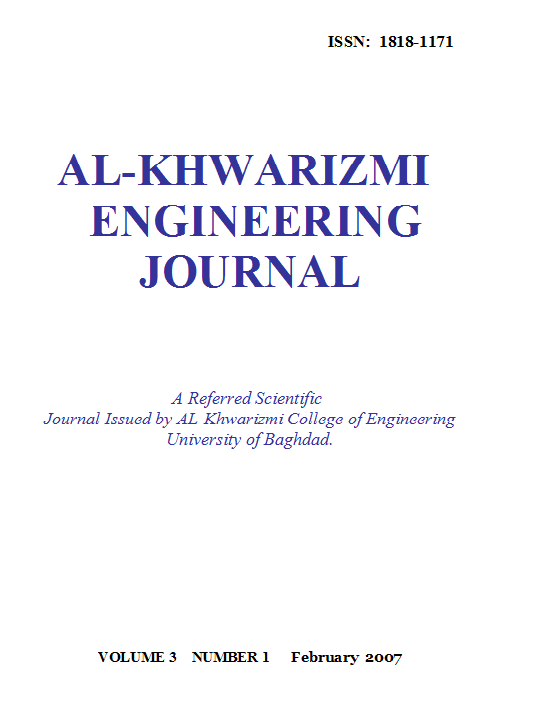Design and Analysis of New Prosthetic Foot.
Abstract
There is a variety of artificial foot designs variable for use with prosthetic legs . Most of the design can be divided into two classes, articulated and non-articulated feet. one common non-articulated foot is the SACH . The solid ankle cushion heel foot referred to as the SACH foot has a rigid keel .
One key or the key factor in designing a new prosthesis is in the analysis of a patients response .
This view is the most important because if the foot does not provide functional , practical or cosmetically acceptable characteristics the patient will not feel comfortable with the prosthesis , therefore design and manufacturing a new foot is essential, this foot made from polyethylene, its different shape and characteristics
The characteristics deemed important by patients in achieving natural gait motion include:
Dorsiflexion
Energy return
Fatigue test
In this study, including all these characteristics test, design fatigue foot tester according to ISO 10328 and design new foot .Also, the testometric crosshead was modified to find dorsiflexion angle and energy return .The fatigue criteria for polymer was proposed, in mathematical solution.
Finally , the characteristics of SACH foot was compared with new foot by mathematical solution and used visual basic program and experimental method by different tests. From these test that the new foot is better than SACH foot for all test .
Downloads
References
2.Ker R.. The time –dependent mechanical properties of the human subcalcaneal fat pad in compression, J Anat . 1990 , 171: 131-38.
3.Derek W. Potter .Gait analysis of a new low cost foot prosthetic for use in developing countries. MSc thesis, Queen's university at Kingston Canada , 2000.
3. Daher R . physical response of SACH feet under laboratory testing , Bulletin of prosthetics research , 4-50, 1975.
4.Wevers , H.W and Durance , JP .Dynamic testing of below knee prosthesis : assembly and components ., prosthetics and orthotics international , 11, 117-123, 1987.
5. Kabra , S.G. and Narayanan R. Equipments and methods for laboratory testing of ankle-foot prostheses as exemplified by the jaipur foot , journal of Rehabilitation research and development 28(3):23-34, 1991.
6. Francis J. Trost . Energy –storing feet . journal of the association of children’s prosthetics –orthotics clinics , 1989, vol 24 , num 4, pp 82.
7. Lehmann , J.F , Price R. , Boswell S.Dralle and A. Questad . Comprehensive analysis of
dynamic elastic response feet : SEATLE ankle/light foot versus SACH foot , Phys Med Rehabil 74:853 -861, 1993.
8. Lehmann , J.F , Price R. , Boswell S.Dralle and A. Questad . Comprehensive analysis of energy storing prosthetic feet:flex foot and Seattle foot versus standard SACH foot. Phys Med Rehabil 74:1225 -1231, 1993.
9. Joseph E. Shigley. Mechanical engineering design. Library of congress cataloging in publication data, 1986 , pp 243.
10. ASTM standard test method for tensile properties of plastic D638-97 , ASTM standard 46-57 , 1998.
11. ASTM standard test method for fatigue of plastic D 671 , ASTM standard , 1998.
12. ISO standard test method for fatigue foot test ISO 10328 , 1996.
13. Daniel Rihs and Ivan polizzi . prosthetics foot design . MSc thesis , Victoria university of technology , 2002 , pp 56.
14. Ehara , Y. , Beppu M . , Nomura , S. Kunimi and Takahashi S. Energy Storing Property of so- called energy storing prosthetic feet . Phys Med Rehabil 74: 68-72 , 1973.
15. B.Contaya. Energy storing prosthetic feet. Monash University, REHAB TECH ,pp 73, 2001
Downloads
Published
Issue
Section
License
Copyright: Open Access authors retain the copyrights of their papers, and all open access articles are distributed under the terms of the Creative Commons Attribution License, which permits unrestricted use, distribution, and reproduction in any medium, provided that the original work is properly cited. The use of general descriptive names, trade names, trademarks, and so forth in this publication, even if not specifically identified, does not imply that these names are not protected by the relevant laws and regulations. While the advice and information in this journal are believed to be true and accurate on the date of its going to press, neither the authors, the editors, nor the publisher can accept any legal responsibility for any errors or omissions that may be made. The publisher makes no warranty, express or implied, with respect to the material contained herein.












